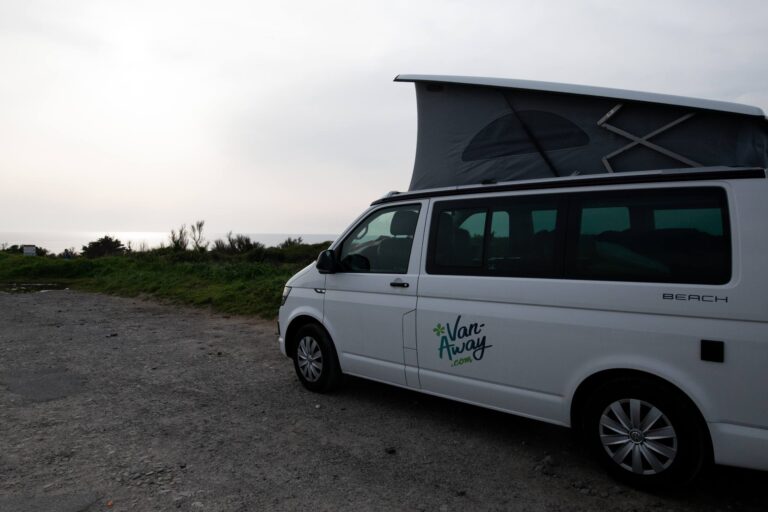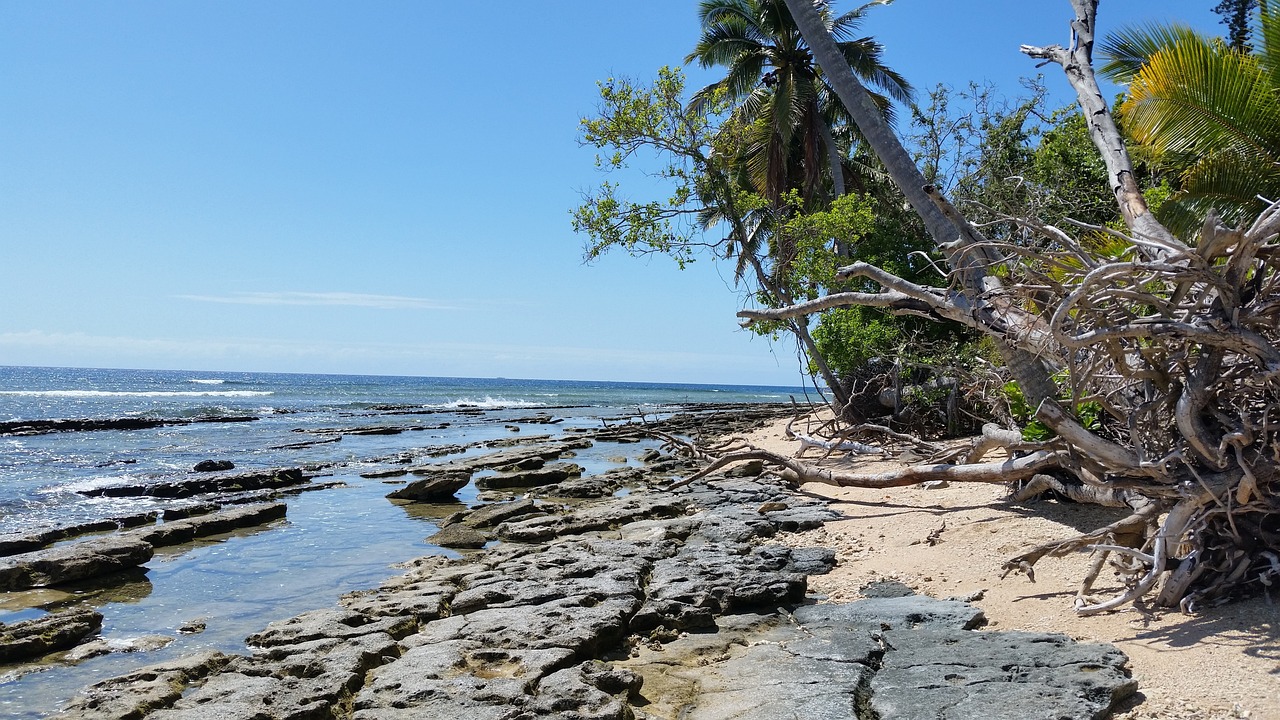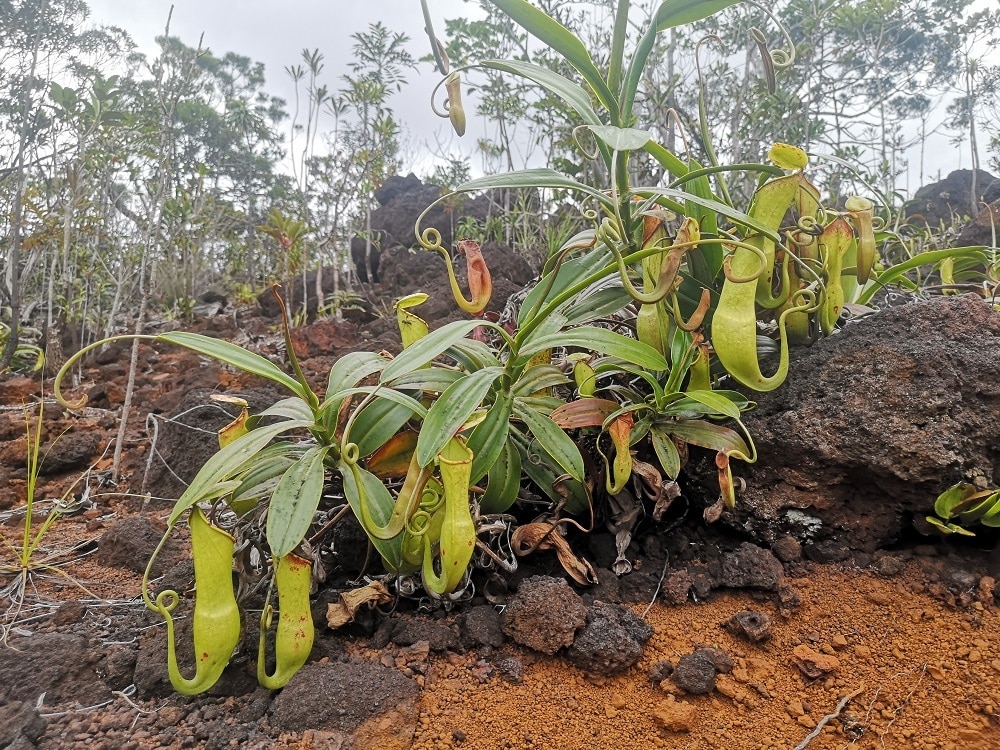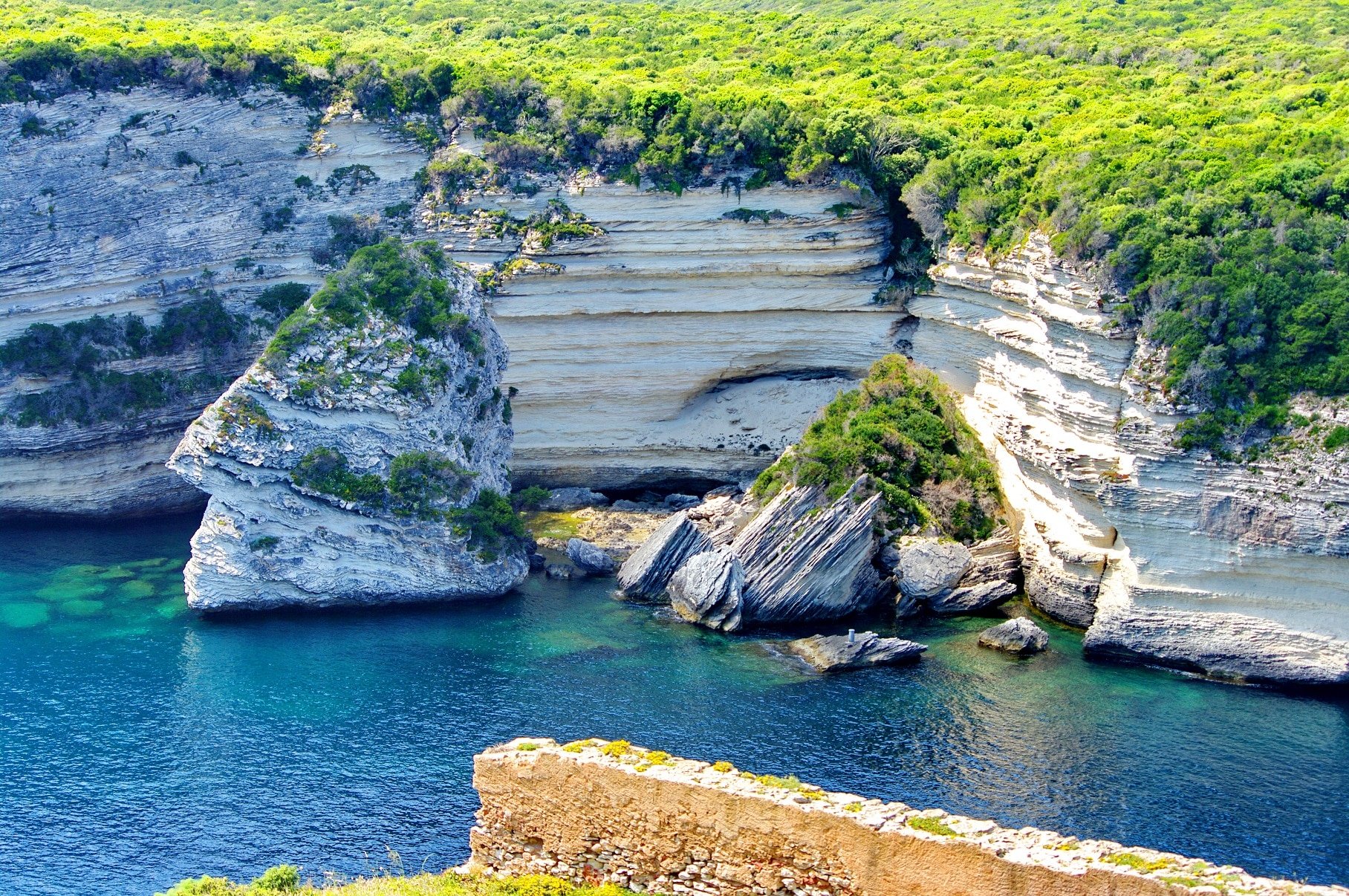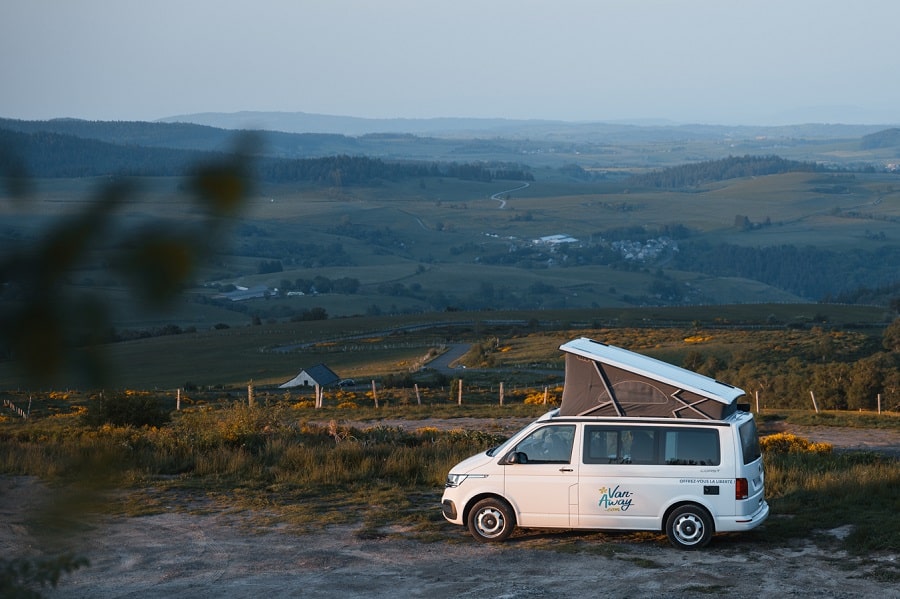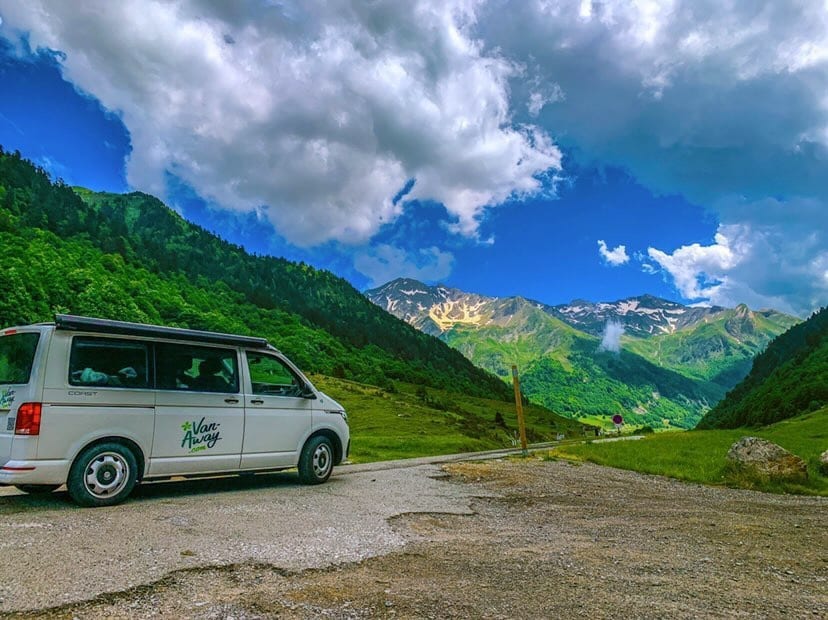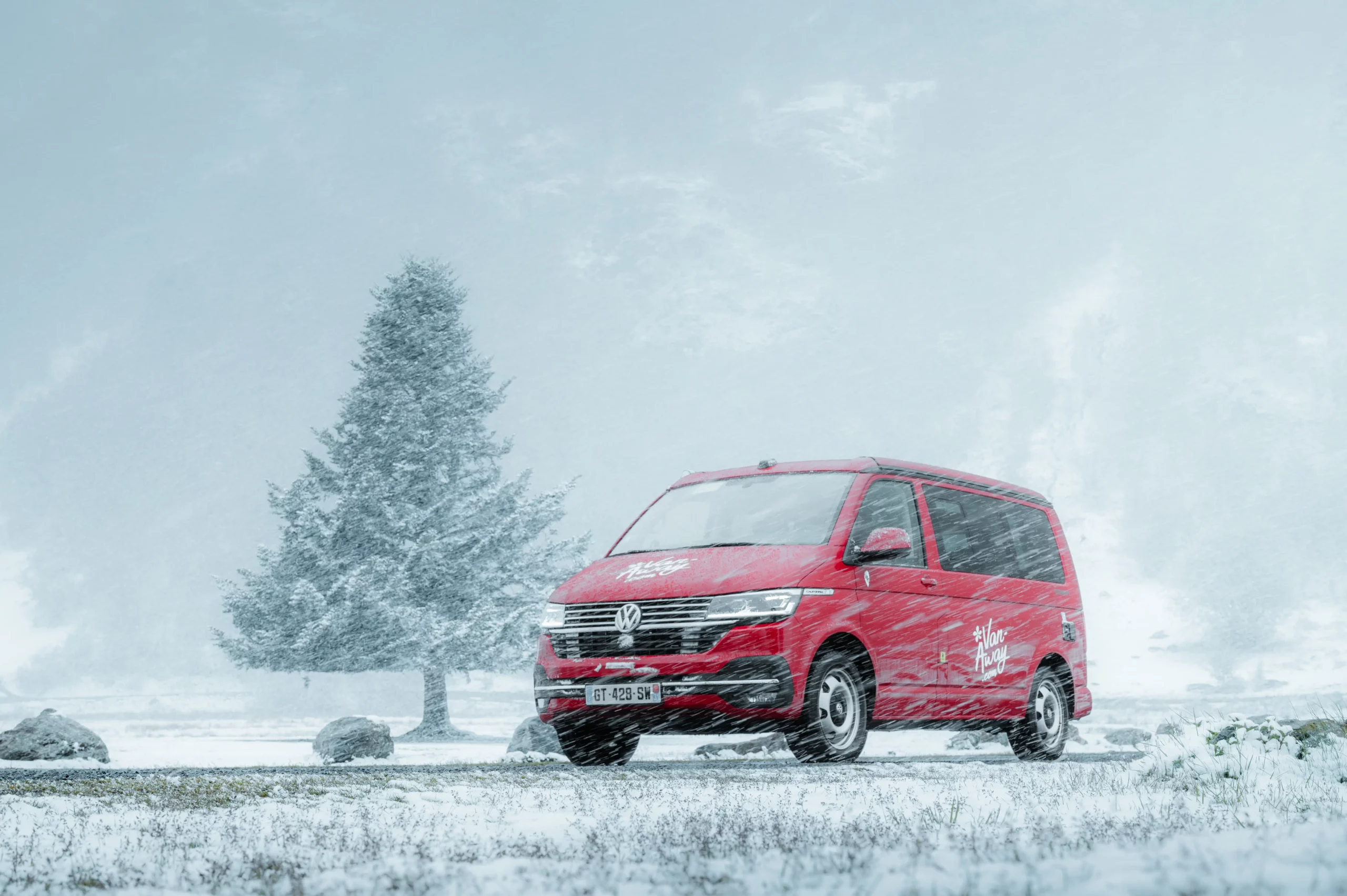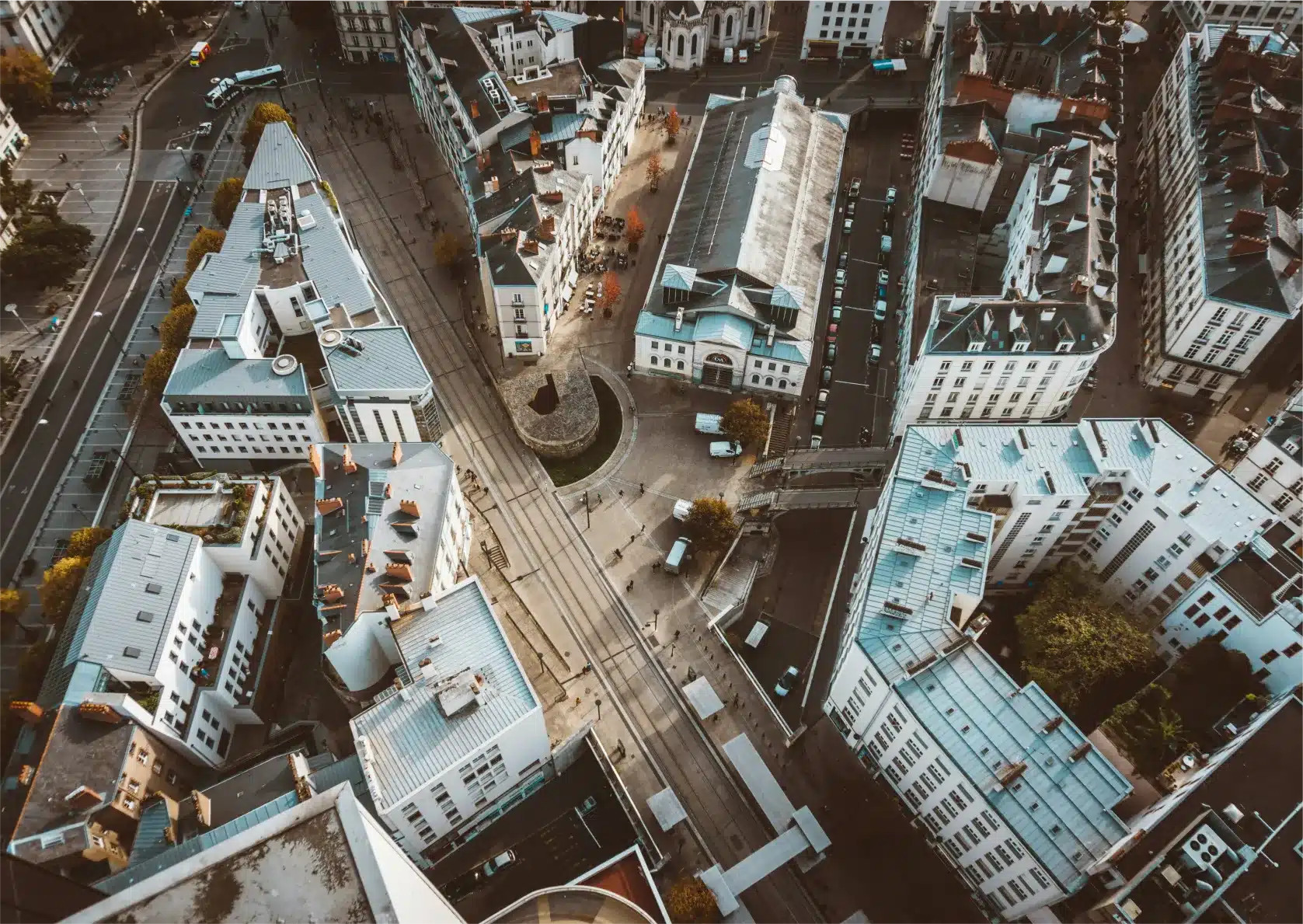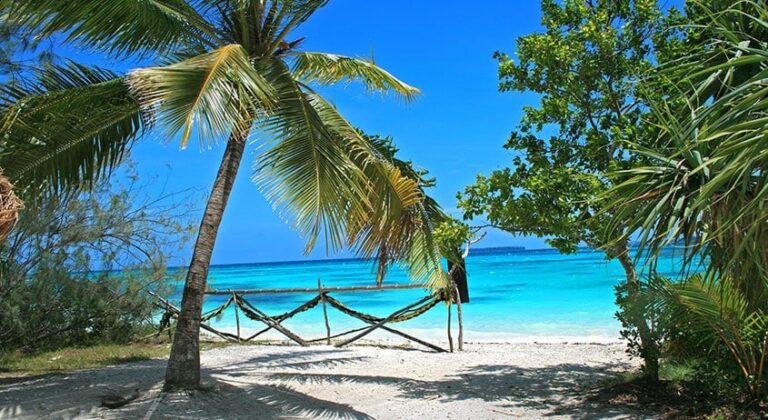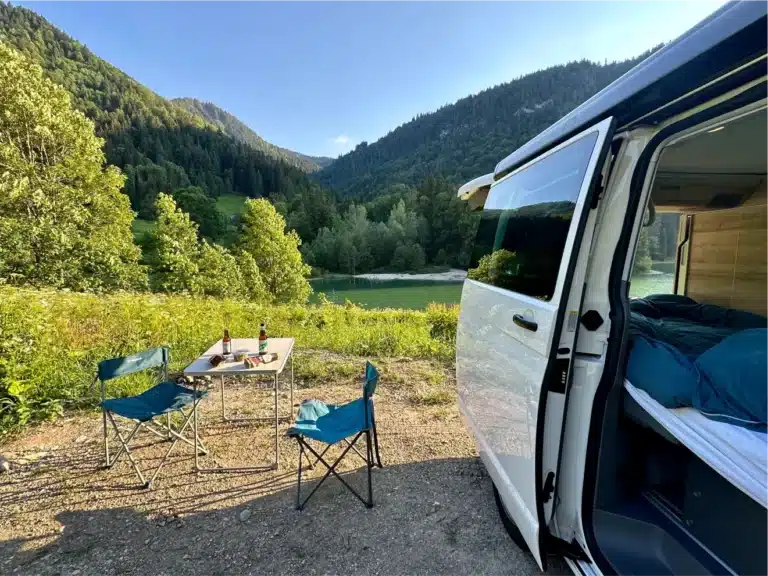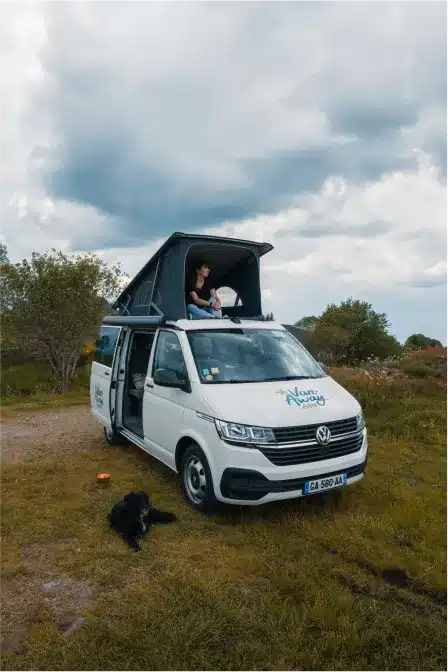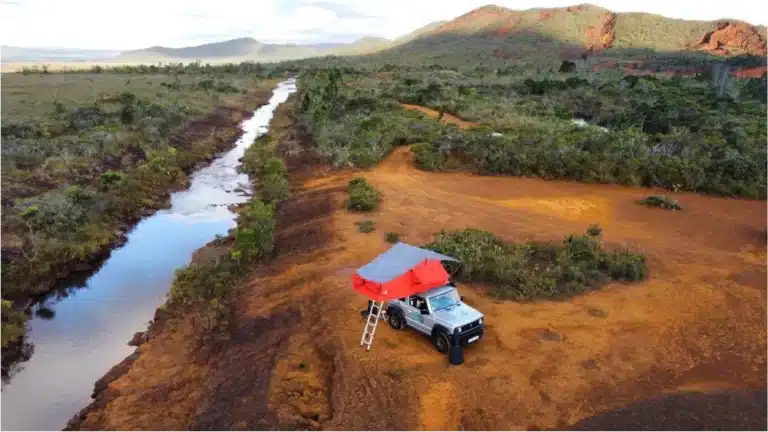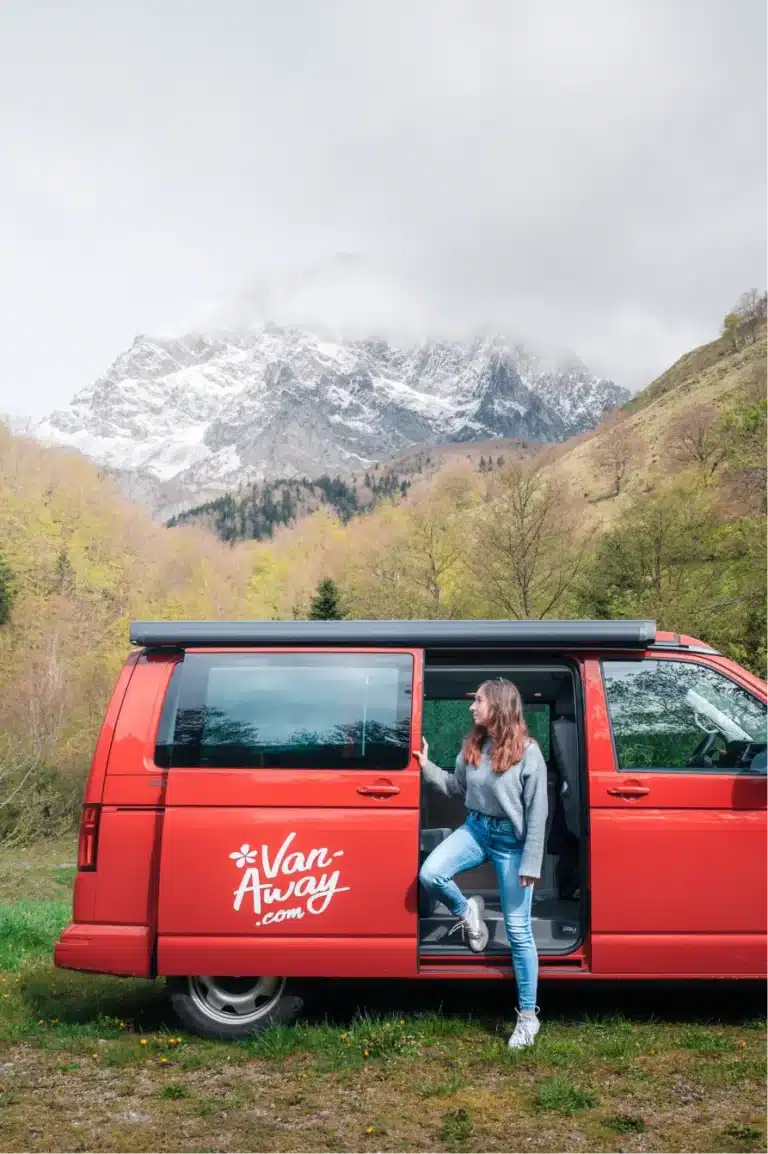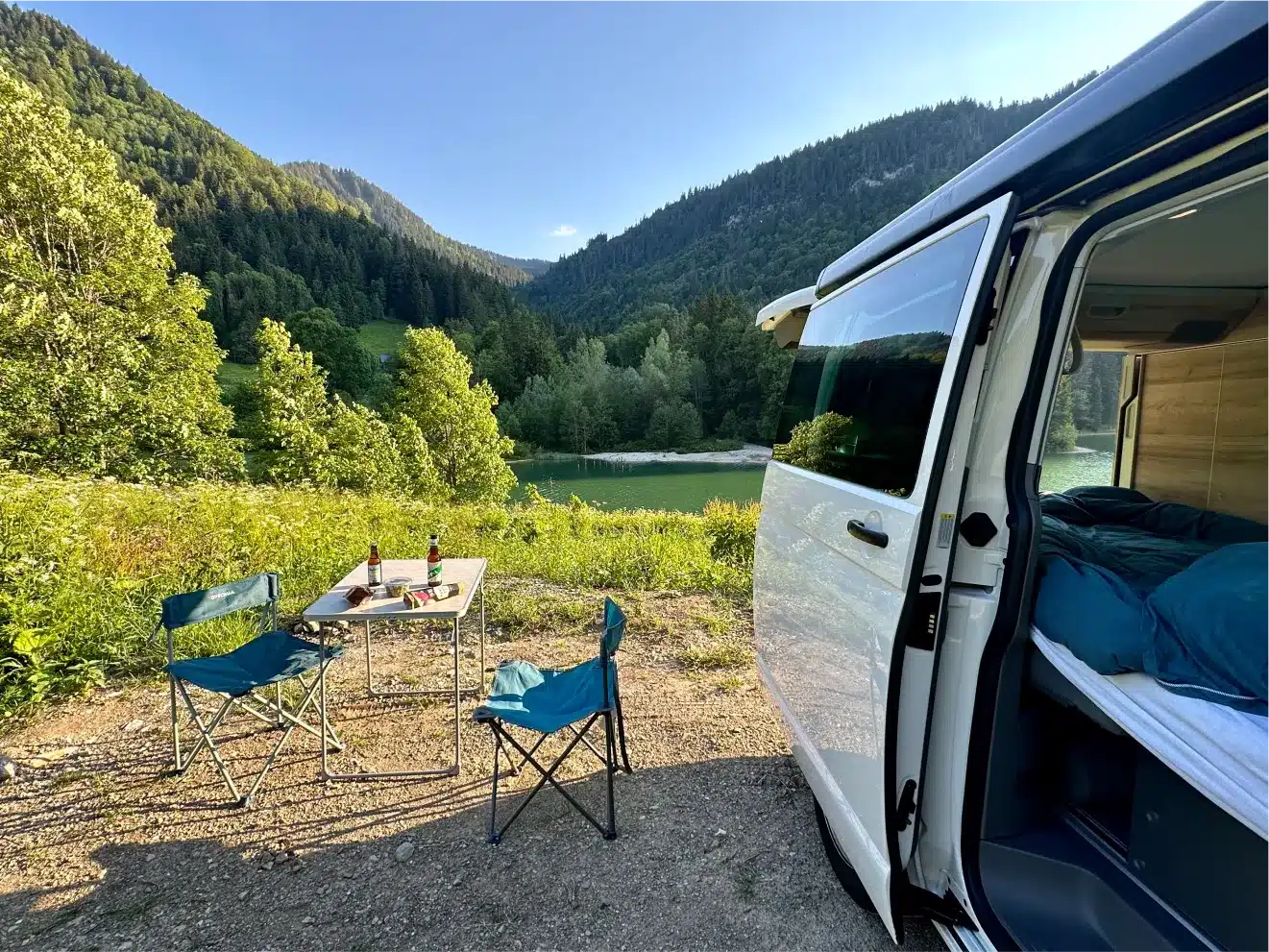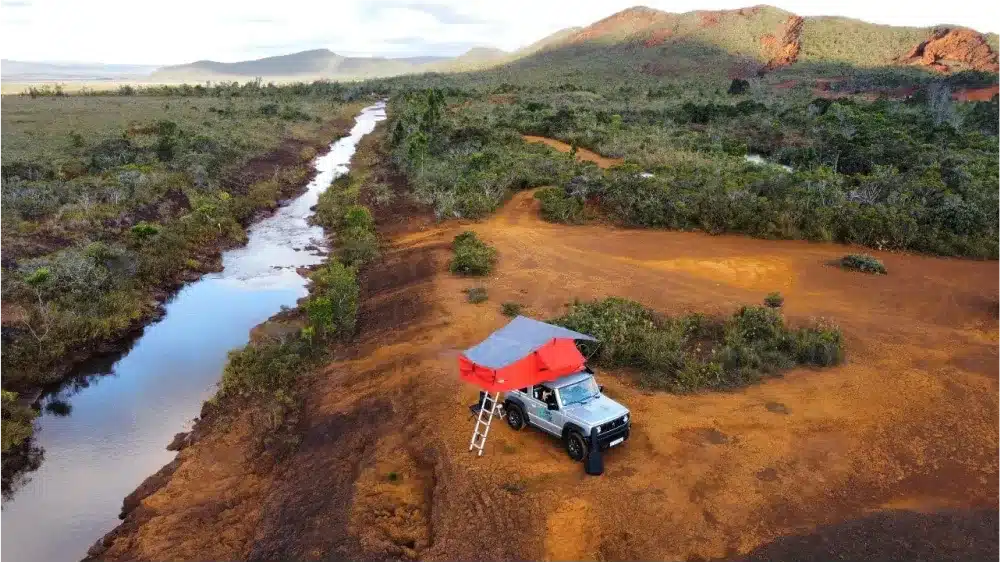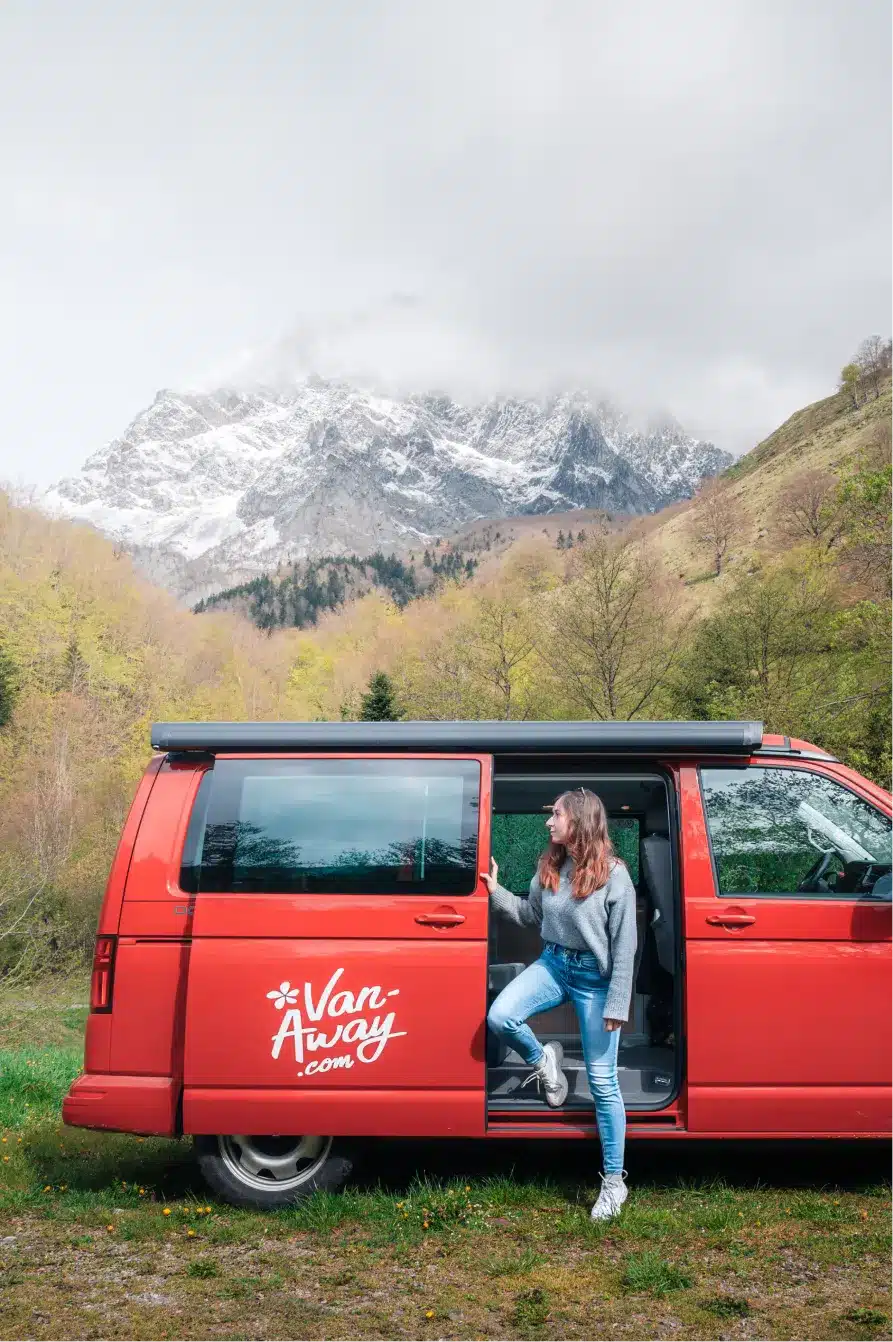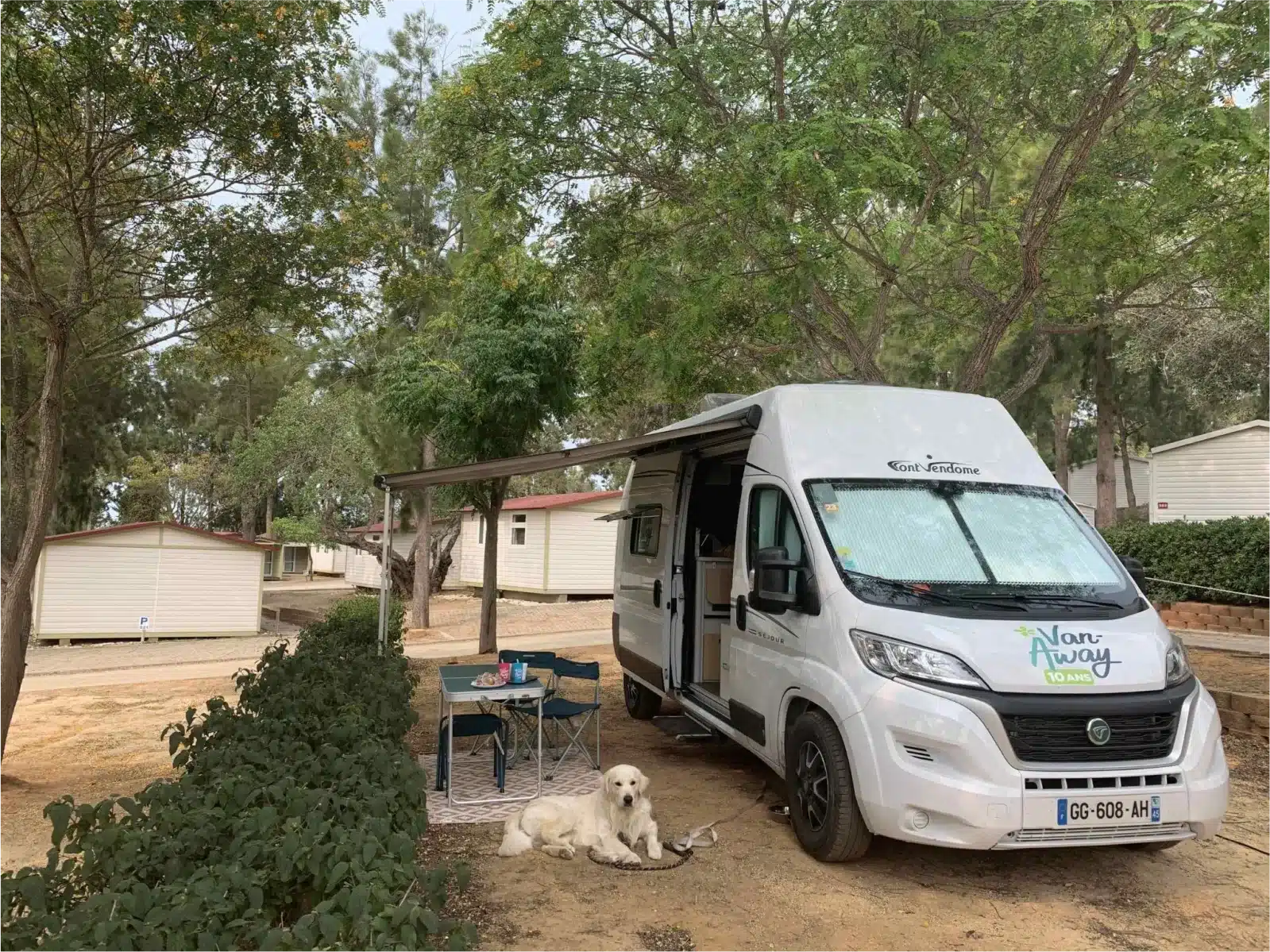About this road trip
1158 km
Medium (5 to 8 days)
Îles
One week around New Caledonia through the Wild West plains of the west and north, the mining lands of the southeast, and the lush vegetation of the northeast coast… all nestled in the turquoise of the lagoon.
Trip itinerary
Day 1: Païta (Van-Away agency) – Farino
It takes about an hour to drive from the Païta agency (La Tamoa) to Farino, the first stop on this road trip. This time may extend if you decide to stop at the La Foa Tourism office (all the info on the region including Farino, Sarraméa, and Moindou, local products…), located in the center of town and near the public park (endemic palms, historical monument, and traditional monumental sculptures).
The Parc des Grandes Fougères can be explored on foot, by mountain bike, or on horseback… This vast area of endemic wet primary forest is home to a good population of cagous. Paid access, dogs not allowed, closed on Tuesdays.
The deck at Farino’s town hall offers a stunning panoramic view of the whole region, described on an orientation table.
Overnight options:
A designated area is located behind the Farino town hall. Check the park4night app.
Several campgrounds can accommodate your camper van.
Alternative: Farino and Sarraméa are the only two municipalities in the country without coastal access. If you’re drawn to the sea, you may prefer a day at Ouano beach in La Foa. Camping, snack bar, surfing and kitesurfing spot…
Day 2: Farino – Ponerihouen
From Farino, the cross-island road heading towards Kouaoua leads us over to the East Coast. Lush vegetation contrasts sharply with the red mining soil. Viewpoints over active mines and the Serpentine, a conveyor belt over a dozen kilometers long transporting ore to its loading point on a bulk carrier ship. Impressive.
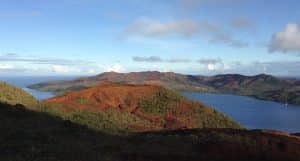
Heading toward Poro, the winding red road overlooks the mines.
Past Houailou, the mining landscapes give way to the lush greenery of the East Coast and here is Ponérihouen, a peaceful haven. Seasonal fresh produce in the roadside stalls and women’s markets, guaranteed smiles and easy conversation.
Overnight options:
The towns of Kouaoua, Houailou, and Ponérihouen offer free parking areas. Check the park4night app for details.
Camping de Tiakan.
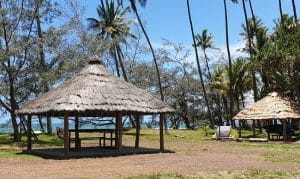
Great value for money, beachfront, hot and clean showers, very nice 🙂
Day 3: Ponerihouen – Poindimié – Hienghène
The must-do: diving on the coral reef in Poindimié, with the proven professionalism of Aqualagoon, and/or with Baboo in Hienghène, which also has a campsite for overnight stays. Great value for money, right on the beach, cold but clean showers, very friendly. Book in advance if you need a power hookup.
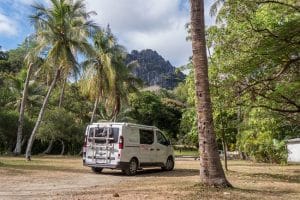
The Camping Le billet de 500, very quiet, but no lighting at night and average bathroom facilities (go see the house across the road to set up).
All the info on the region is available at the Hienghène Tourist Office, which is very active. Unique rocky landscapes, many activities available, other accommodations possible… it’s very tempting to stay several days…
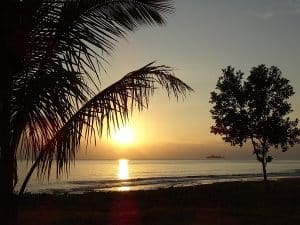
Day 4: Hienghène – Col d’Amos
First, let’s go see the famous Hienghène hen, from the lookout 2 km south of the village, or by sea by renting a canoe from Baboo—a real treat.
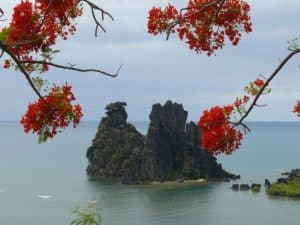
The Goa Ma Bwarhat Cultural Center, with its traditional huts, is a major site of Kanak culture.
To the north, the RPN3 road is not cut off, contrary to what MapsMe or other GPS apps might suggest: a remnant from the old days, the Ouaième ferry—the last one still operating—runs 24/7. Along the East Coast, you’ll find stunning, dramatic landscapes where waterfalls such as Tao and Colnett plunge down.
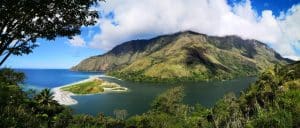
Peaceful crossing through the many coastal tribes of Pouébo and, as you please, a stop at one of the commune’s beautiful beaches or discovery of monuments bearing witness to the early colonial history of the country. Take advantage of the small stands that line the roadside (road-shops) to stock up on delicious fresh produce and drop a few coins into the provided box—the only “staff” on duty. This kind of trust feels unreal in our modern societies…
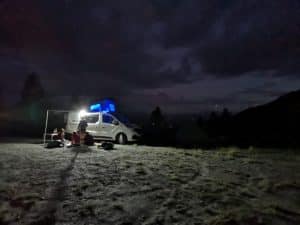
For the night:
Designated area at Yambé before Pouebo along the seashore (it’s polite to check in with the old man living there and slip him a 500 CFP bill…), and free camping along the beaches of Saint-Mathieu and Mahamate.
For campsites: either along your route or autonomously atop Col d’Amos, with a stunning viewpoint and a hiking trail departure.
Day 5: Col d’Amos – Pointe de Poingam, far north of the island
Amos is the natural border between the East Coast and the much drier Far North. In these landscapes that showcase every shade of ochre, Ouégoa enjoys the green corridor of the Dihaot Valley, the country’s only river. Marked trails and excursion options. The women running the roadside stalls will be so happy to see you—they are incredibly kind.
Koumac, the main town of the Far North, features a marina, climbing, and caving sites. It’s wise to refuel here before heading on to Poum to take the Poingam track.
Relais de Poingam (peaceful, cheerful, beautiful beach, curious local products…) is well-known for its excellent food. One of the marked trails leads to the revival of an ancient activity: the salt marshes (at least a 2-hour walk). Unusual but wonderful: a natural clay mud bath followed by a swim in the sea and a light shower with niaouli hydrosol (donation as you wish)—a beautiful experience…

Overnight options:
Relais de Poingam has a beachfront campsite.
Autonomous camping at Boat Pass, the ultimate northern tip of Grande Terre, in an archipelago-like setting. Picnic tables. Be careful not to block the boat launch.
Beautiful Plage de Nénon, halfway between Poum and Boat Pass.
Day 6: Poingam – Bourail
Return from the end of the world for a grand raid along the West Coast… the rolling savannah waving in the wind and lit by dazzling sun, the pinkish hills shaped by rare rains soon give way to vast plains devoted to cattle and deer farming.
At Malabou, taxi-boats to the islets and sport fishing.
In Koné, capital of the North Province, the provincial cultural center of Pomémie, with its permanent exhibit, offers insight into Kanak culture and, through its craft shop, a chance to bring back some souvenirs.
The Hibiscus Hotel offers introductory ULM flights and flyovers of the Heart of Voh. ULMs are true two-seater mini-planes—very, very… maneuverable, wow… In addition to the emotional view of the iconic mangrove heart, flying over the vast living painting of the reef is absolutely stunning.
Tip for accommodation: a wild camping area is authorized and signposted near Poé Beach in Bourail.
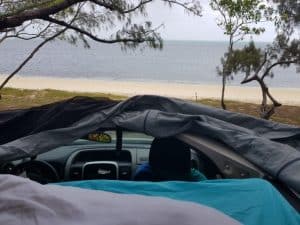
Day 7: Bourail – Païta (Van-Away agency)
The Bourail road trip is described in more detail here: Weekend on the West Coast of New Caledonia
As you can see, it lasts a solid two days… You’ll have to decide… or extend the trip? Diving or Déva Park? Glass-bottom boat or birdwatching? Poé Beach or Lovers’ Bay? If you’re going to choose, you might as well add one more day.
To complete the tour of Grande Terre with a discovery of the Grand South’s landscapes, its endemic flora that blends strangeness with beauty, its rivers, lakes, and marine waters, and the people who know their stories and secrets:
Three days in the Grand South
Return:
However long you stay in Bourail, Païta is at least a 2.5-hour drive away, and you should plan for a quick stop at the car wash station in Bourail. (WARNING: There are no other wash stations between Bourail and Païta.)
Local attractions, leisure, activities, food… info and contacts in Le Globe-Trotter New Caledonia (on board or online at www.leglobetrotter.nc).
